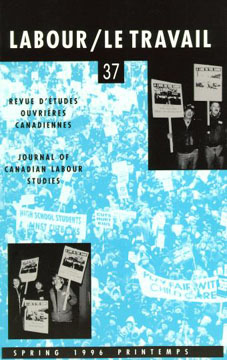Abstract
The primary objective of this paper is to delineate a typology or hierarchy of public feasts in mid 19th-century Saint John and Halifax in order to show how we can use food and drink as markers of class and as instruments in the process of class formation. I will be considering such questions as: why did people in different classes partake of "victuals" and "spirits?"? How does this reflect their different priorities and social practices at mid century? Emphasis will be placed on public secular feasts— that is, the banquet, ox roast, institutional repast, and tea and coffee soirée — which were held to commemorate royal and patriotic anniversaries. It is only through these local micro-studies that we can effectively "get at" the meanings associated with food and drink.
Résumés
L'objectif primordial de cet article est de délimiter une typologie ou une hiérarchie des festins publics au 19e siècle à Saint-Jean et à Halifax, afin de démontrer comment l'usage de la nourriture et de la boisson marquent la classe et sont des outils dans le processus de la formation de classe. Les questions considérées seront les suivantes: pourquoi les membres des classes distinctes goûtaient-ils aux «vivres» et aux «spiritueux»? Comment cela se refléte-t-il dans leurs priorités et dans leurs habitudes sociales au milieu du siècle dernier?
L'emphase sera mise sur les festins publics séculaires c'est-à-dire: le banquet, le gueuleton (rôti de boeuf), le repas institutionnel ainsi que la soirée thé et café — cette dernière ayant lieu lors de la commémoration des anniversaires royaux et patriotiques. C'est à travers ces micro-études locales que l'on pourra comprendre effectivement les sigifications associées à la nourriture et à la boisson.
